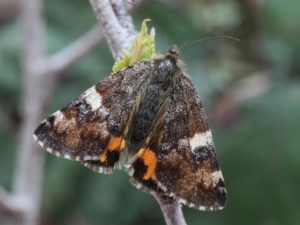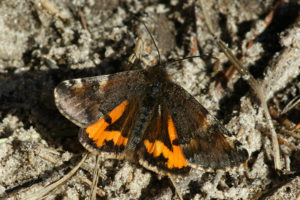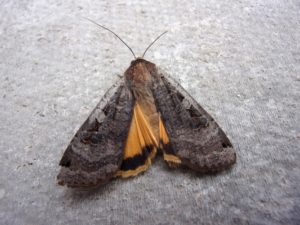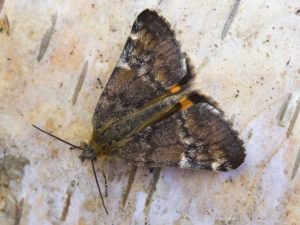Orange Underwing Moth (Archiearis parthenias)
The orange underwing moth is a member of the geometer moth family, first described by Swedish entomologist Carl Linnaeus in 1761. They get their name because of the orange pattern on their underwing or hindwing, that appears to be one of their distinguishing features. In fact when in flight the entire moth seems orange from a distant, though their forewings have a different coloration.
butterfly-conservation.org
Scientific Classification
- Family: Geometridae
- Genus: Archiearis
- Scientific Name: Archiearisparthenias
Description and Identification
Pupa
Once mature, the larva undergoes pupation.
Adult Moth
Sexual Dimorphism: Present but not prominent.
Color and Appearance
Forewings: When the wings are opened, they are blackish-brown with white markings. When the wings are closed, the color and patterns remain unchanged.
Hindwings: When the wings are opened, they are bright orange with black markings. When the wings are closed, the orangish color is only slightly visible.
Average wingspan: 30–40 mm
Flight pattern: Erratic
Season: February to May
Egg
Adults lay their eggs either close to the host plants or on the soil.
Quick Facts
| Distribution | Europe, Russia, and Japan |
| Habitat | Anywhere with mature birch trees, primarily heathland and woodland |
| Lifespan of Adults | Not recorded |
| Host Plants | Birch trees, mainly downy and silver birch |
| Adult Diet | Does not feed |
Scientific Classification
- Family: Geometridae
- Genus: Archiearis
- Scientific Name: Archiearisparthenias






